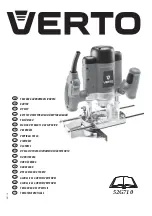
User Manual
COGE5, COGE5-F
page 28 of 110
© KEYMILE December 2015
EN/LZTBU 372 144/3 RA
110
Installation
Please note:
When connecting Ethernet ports configured in manual mode (no auto-negoti-
ation) to Ethernet ports in auto-negotiation mode, the link may be up but the
duplex settings may be inconsistent. This can result in poor throughput per-
formance on the link.
The previous note applies to any Ethernet device and is a consequence of
the behaviour of Auto-Negotiation and Parallel Detection. When a port sup-
porting auto-negotiation is connected to a port not supporting auto-negotia-
tion, the port supporting auto-negotiation will revert to parallel detection: This
can detect the link type (10BASE-T or 100BASE-TX) but will assume
half-
duplex
operation (reference IEEE 802.3 clause 28.2.3.1 note 2). If the far
side port is manually configured in full-duplex mode, then there is an incon-
sistent configuration and the side operating in half-duplex may experience
collisions while transmitting data.
Please note:
Ethernet cables can be ordered from KEYMILE.
For details on available Ethernet cables, please refer to
.
4.4.5
Synchronization Interface Cable
The synchronization interface permits to connect the following signals
according to ITU-T G.703:
• two symmetrical clock inputs (2048 kHz):
− ESI-1,
− ESI-2.
• two symmetrical clock outputs (2048 kHz):
− ESO-1,
− ESO-2.
The interface is implemented on COGE5 by means of a micro D-Sub con-
nector.
Please note:
This cable can be ordered from KEYMILE.
For details on available synchronization cables, please refer to
.
4.4.6
Cable Fixing
In the XMC25, cables connecting to the COGE5 unit or other units in general
should be guided and attached to the cable tray as indicated in Figure
"Side view of the subrack including cabling and cable tray"
. For more
detailed information, please refer to
[301] User Guide “XMC25 Installation”
.
















































